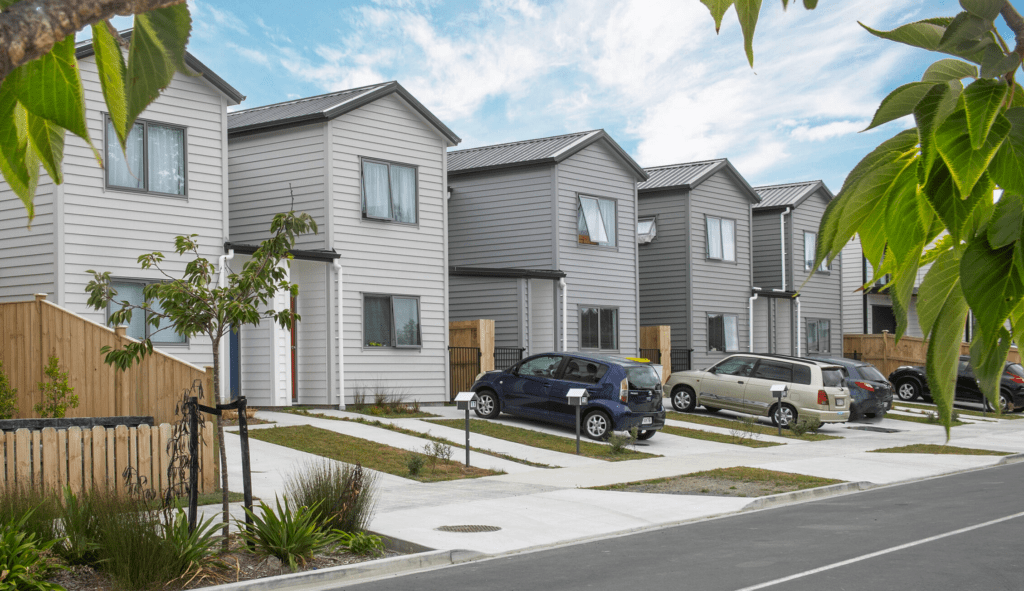The Challenge
Community housing provider CORT needed a way to monitor indoor air quality across hundreds of dwellings to maintain healthy and safe living conditions for more than 550 occupants, and more as it expands.
The Solution
CORT turned to sustainable, low cost and easy-to-use IoT technology, allowing it to get a better understanding of indoor air quality and therefore living conditions inside all homes.
The Benefits
CORT now has a real-time view into indoor air quality across its dwellings, which has opened the door to conversations with residents on ways they can keep their homes in the healthiest state possible. It has also had the unexpected benefit of combating challenges resulting from climate change.
CORT (Community of Refuge Trust) is a community and affordable housing provider to more than 550 people in Auckland. It operates over 400 medium density properties, with another 100 dwellings currently under development.
According to Stephen Hart, CEO at CORT, the non-government, not-for-profit (NFP) organisation has an ethos to constantly evolve the way it designs and builds homes. A key part of that is better understanding living conditions to optimise quality of life in every premises, and CORT saw an opportunity to leverage affordable and sustainable technology solutions and the data these offer to achieve this.
“Community and affordable housing must be treated with the same ongoing care, maintenance and investment as other residential and commercial developments, not forgotten after construction,” said Hart.
“Is what we’re offering doing what it’s intended to? What does it mean for tenants from a modelling perspective? How can we expect knowledge about our dwellings to the people living in them? The NZ Building Code outlines regulatory requirements to maintain safe, healthy and durable dwellings, but the framework alone doesn’t ensure these conditions are actually met in the real world.”

“You can only understand so much from observing and talking with tenants – and there’s often a massive contrast between what the assumed living conditions are, versus what is actually happening within each property. With Thinxtra and Tether and Thinxtra, CORT is combining the lived experiences of its clients with real-time data to inform decisive action that will ensure homes are in optimal condition at all times.”
Nicholas Lambrou,
Chief Executive Officer at Thinxtra
IoT for Healthier Living
After evaluating various technologies options, CORT teamed up with Tether, a New Zealand-based company that provides specialised Internet of Things (IoT) devices and software. Tether’s solutions can monitor and manage indoor air quality across hundreds, or even thousands, of properties simultaneously without any dependencies such as hard-wired electricity or network cables.
CORT subsequently selected Tether’s low power, low cost and easy-to-use EnviroQ solution to deliver on its strategic objectives. EnviroQ combines battery-powered devices and powerful analytics software, enabling CORT to measure and improve IAQ and ventilation by constantly monitoring temperature, humidity, carbon dioxide (CO2) levels, light and noise, and other factors.
Critically, EnviroQ’s smart IoT devices leverage Thinxtra’s 0G Network, which uses Sigfox’s low power wide area network (LPWAN) technology. The 0G Network is a low-bandwidth wireless network specifically designed to connect digital and physical worlds by collecting, measuring and analysing data. It allows small volumes of data to be transmitted when and where it’s needed, over long ranges at a significantly lower cost and without any maintenance overheads.

CORT has commenced installing two sensors inside individual properties, with a third on the outside to allow for comparisons. Information from the devices is provided to CORT’s team through Tether’s mobile and web applications, containing dashboards that offer a real-time view into living conditions.
Hart says, “With Tether and Thinxtra’s combined IoT technologies, we are increasing the depth of our knowledge of the living conditions in each home, far beyond that which we could glean from only observing and speaking with tenants. That information is also passed back to the occupants of our buildings, fostering a partnership where we have a chance to proactively discuss improvements should there be a need.”
Thanks to IoT, CORT has access to real-time and easy to understand IAQ data it can share with tenants, and therefore and engage in productive discussions about living conditions to advise on ways it can continue to make homes healthier.
The added benefit of connecting the sensors to Thinxtra’s national 0G Network is that it eliminates the need for CORT to build or invest in a dedicated network, nor dedicate budget to maintenance. As the sensors are battery-powered, they do not draw power from homes, and only need to be replaced once every five years.

“The property sector is a case of contrasts, whereby so much money is spent on developing apartments and houses, and so little is invested to understand the potential impacts of living in them. CORT is taking a leading position by not only providing high quality dwellings, but also equipping them with leveraging low power, low cost IoT devices to establish a knowledge base that keeps residents healthier and more comfortable all year-round.”
Sam Blackmore,
Chief Operating Officer at Tether
Coping with Climate Change
The Thinxtra-powered EnviroQ solution will also help CORT manage unforeseen challenges resulting from climate change.
“An interesting facet of New Zealand homes, particularly newer builds, is they are well constructed and insulated. In the context of climate change, there’s now the underlying questions around whether homes could become too hot, and whether they will perform properly in summer – after all, the historic focus has been on comfort and safety in winter,” says Hart.
With granular data on internal and external environments, CORT can ensure conditions in Auckland’s typically well-insulated homes, designed to cater for a colder climate without using excessive energy, are performing equally throughout consistently hotter summer months, and without driving up energy use.

“IoT technologies provide an innovative and significant opportunity for smart building management and greener buildings, as well as helping cut carbon emissions. Remote monitoring helps reduce vehicle movements as there’s no need to visit a large, dispersed asset base in person, and measuring air temperature supports more efficient heating and cooling. The added benefit from a low-carbon investment such as this drives healthier housing.”
Craig Weise,
Chief Executive Officer at New Zealand Green Investment Finance (NZGIF)

About CORT
CORT Community Housing (Community of Refuge Trust) is a registered community and affordable housing organisation providing homes for people on very low incomes in Auckland.
CORT has been offering community housing for more than 30 years. CORT are a non-government, not-for-profit community organisation and a registered charitable trust.
For more information please visit the CORT website.


